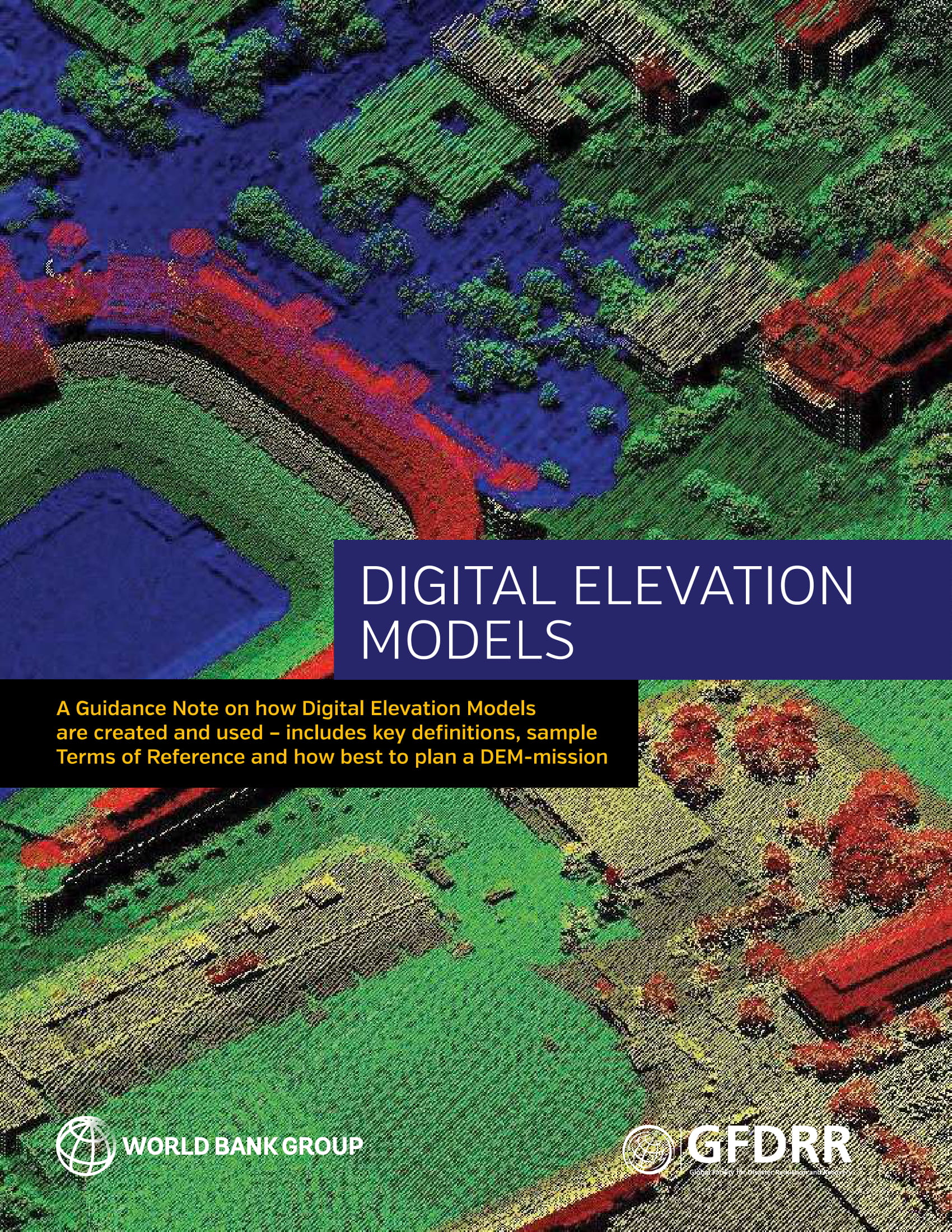Digital Elevation Models (DEMs) in its most generic term implies elevation of the terrain devoid of vegetation and man-made features. It represents the elevation of the earth’s surface in the form of a digital image where each pixel contains an elevation value of the center point of the pixel. DEMs are a primary input to any modeling or process quantification involving the earth’s topography, and are used across several areas of development. In disaster risk management, disaster risks related to floods, coastal erosion, storm and/or tidal surges are directly linked to elevation. Access to elevation and slope maps enable responders to assess where floods will infill the landscape, create inaccessible areas, or create health risks, e.g., cholera.
The primary target audiences of this DEMs Guidance Note are World Bank Group Task Team Leaders (TTLs), project managers and their clients, or anyone interested in DEMs. It primarily aims to: (a) provide sufficient information to understand the overall processes involved in the acquisition of DEMs and their uses, and (b) to inform and guide the decision-making criteria; different design and implementation strategies; and options and costs that exist when acquiring DEMs. This information and guidance can then help facilitate the most targeted, efficient, meaningful, and economic decisions for DEM acquisition that can be made contextually by both decision-makers and implementers.

